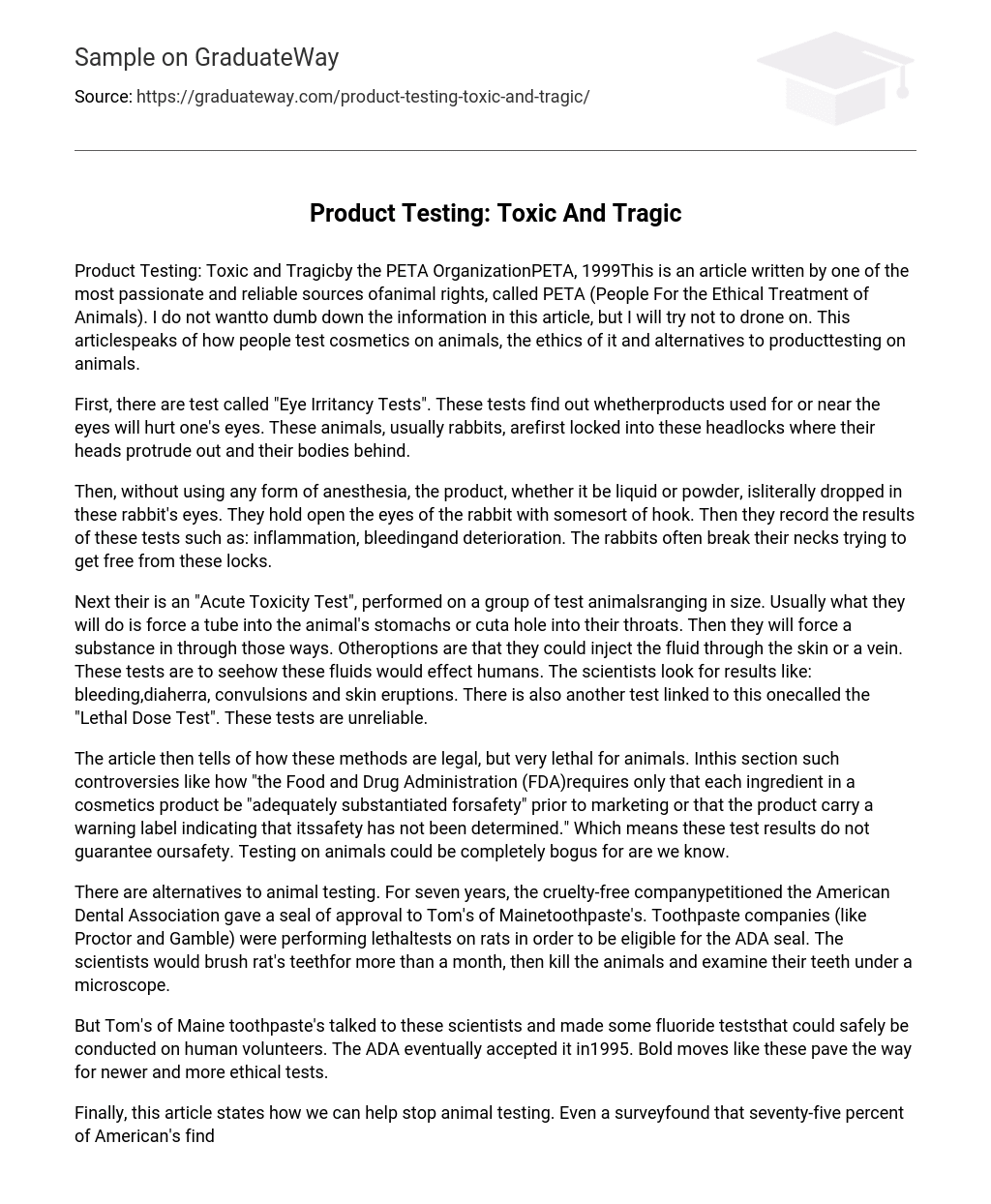This is an article written by one of the most passionate and reliable sources ofanimal rights, called PETA (People For the Ethical Treatment of Animals). I do not wantto dumb down the information in this article, but I will try not to drone on. This articlespeaks of how people test cosmetics on animals, the ethics of it and alternatives to producttesting on animals.
First, there are test called “Eye Irritancy Tests”. These tests find out whetherproducts used for or near the eyes will hurt one’s eyes. These animals, usually rabbits, arefirst locked into these headlocks where their heads protrude out and their bodies behind.
Then, without using any form of anesthesia, the product, whether it be liquid or powder, isliterally dropped in these rabbit’s eyes. They hold open the eyes of the rabbit with somesort of hook. Then they record the results of these tests such as: inflammation, bleedingand deterioration. The rabbits often break their necks trying to get free from these locks.
Next their is an “Acute Toxicity Test”, performed on a group of test animalsranging in size. Usually what they will do is force a tube into the animal’s stomachs or cuta hole into their throats. Then they will force a substance in through those ways. Otheroptions are that they could inject the fluid through the skin or a vein. These tests are to seehow these fluids would effect humans. The scientists look for results like: bleeding,diaherra, convulsions and skin eruptions. There is also another test linked to this onecalled the “Lethal Dose Test”. These tests are unreliable.
The article then tells of how these methods are legal, but very lethal for animals. Inthis section such controversies like how “the Food and Drug Administration (FDA)requires only that each ingredient in a cosmetics product be “adequately substantiated forsafety” prior to marketing or that the product carry a warning label indicating that itssafety has not been determined.” Which means these test results do not guarantee oursafety. Testing on animals could be completely bogus for are we know.
There are alternatives to animal testing. For seven years, the cruelty-free companypetitioned the American Dental Association gave a seal of approval to Tom’s of Mainetoothpaste’s. Toothpaste companies (like Proctor and Gamble) were performing lethaltests on rats in order to be eligible for the ADA seal. The scientists would brush rat’s teethfor more than a month, then kill the animals and examine their teeth under a microscope.
But Tom’s of Maine toothpaste’s talked to these scientists and made some fluoride teststhat could safely be conducted on human volunteers. The ADA eventually accepted it in1995. Bold moves like these pave the way for newer and more ethical tests.
Finally, this article states how we can help stop animal testing. Even a surveyfound that seventy-five percent of American’s find animal testing unethical. If we want tostop animal testing, this article urges us to write letters and get involved with thegovernment. That is the only way to make a difference.





